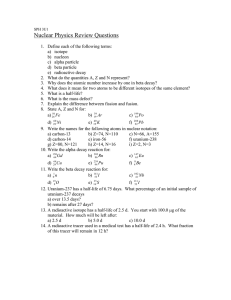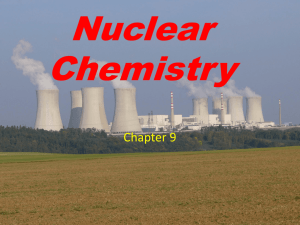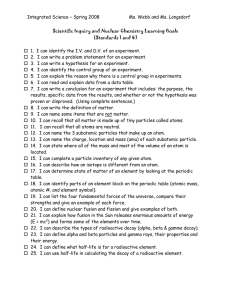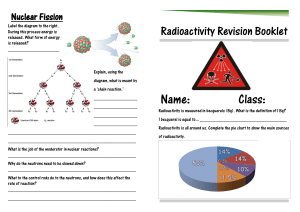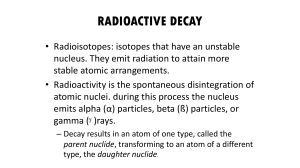In 1896, Henri Becquerel discovered radioactivity.
advertisement
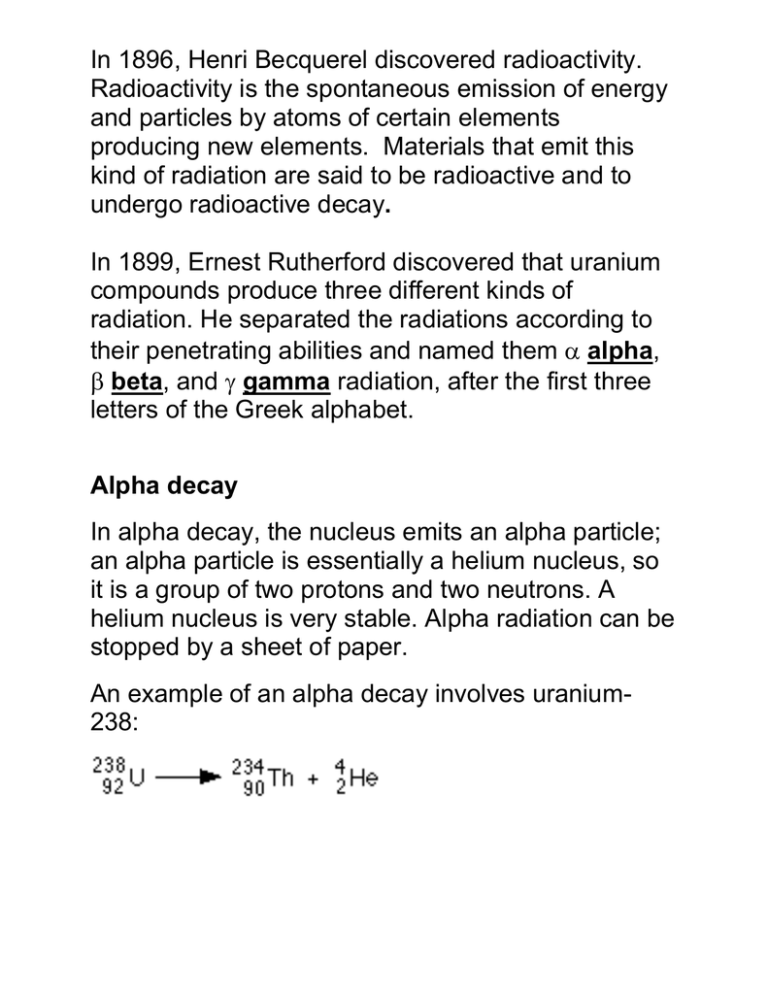
In 1896, Henri Becquerel discovered radioactivity. Radioactivity is the spontaneous emission of energy and particles by atoms of certain elements producing new elements. Materials that emit this kind of radiation are said to be radioactive and to undergo radioactive decay. In 1899, Ernest Rutherford discovered that uranium compounds produce three different kinds of radiation. He separated the radiations according to their penetrating abilities and named them alpha, beta, and gamma radiation, after the first three letters of the Greek alphabet. Alpha decay In alpha decay, the nucleus emits an alpha particle; an alpha particle is essentially a helium nucleus, so it is a group of two protons and two neutrons. A helium nucleus is very stable. Alpha radiation can be stopped by a sheet of paper. An example of an alpha decay involves uranium238: Beta decay A beta particle is an electron. In beta decay an electron is involved. The number of neutrons in the nucleus decreases by one and the number of protons increases by one. Six millimeters of aluminum are needed to stop most beta particles An example of such a process is: Gamma decay The third class of radioactive decay is gamma decay, in which the nucleus changes from a higherlevel energy state to a lower level. Several millimeters of lead are needed to stop gamma rays. Half-Life The time required for half of the atoms in any given quantity of a radioactive isotope to decay is the halflife of that isotope. Each particular isotope has its own half-life. For example, the half-life of 238U is 4.5 billion years. That is, in 4.5 billion years, half of the 238U on Earth will have decayed into other elements. In another 4.5 billion years, half of the remaining 238U will have decayed. One fourth of the original material will remain on Earth after 9 billion years. Home
